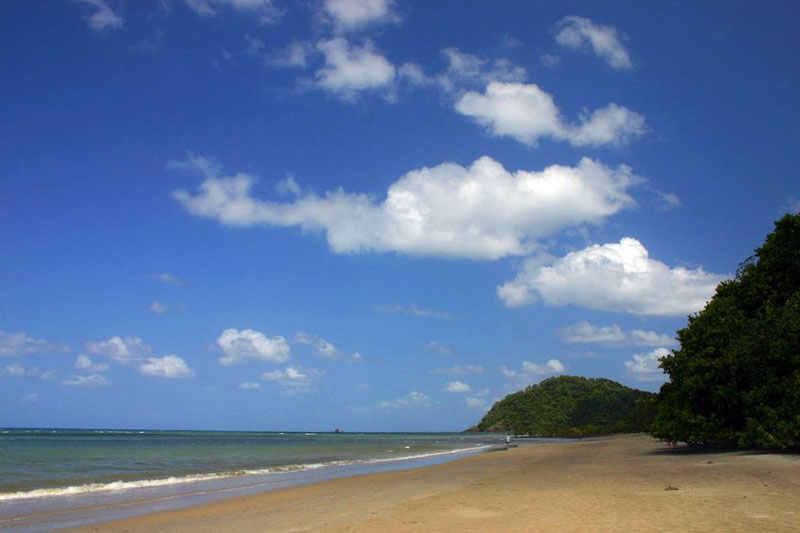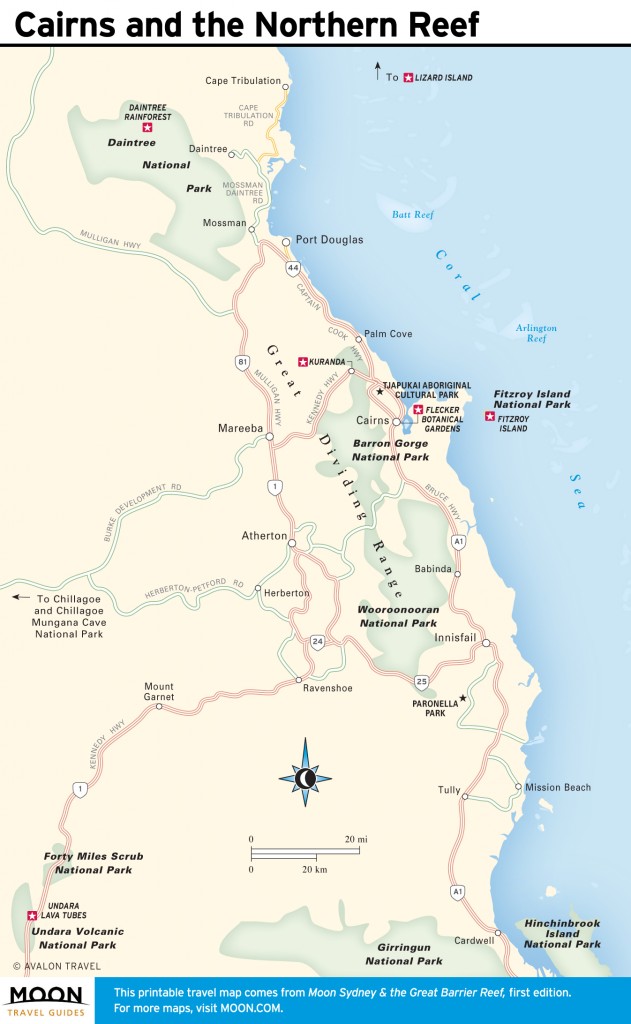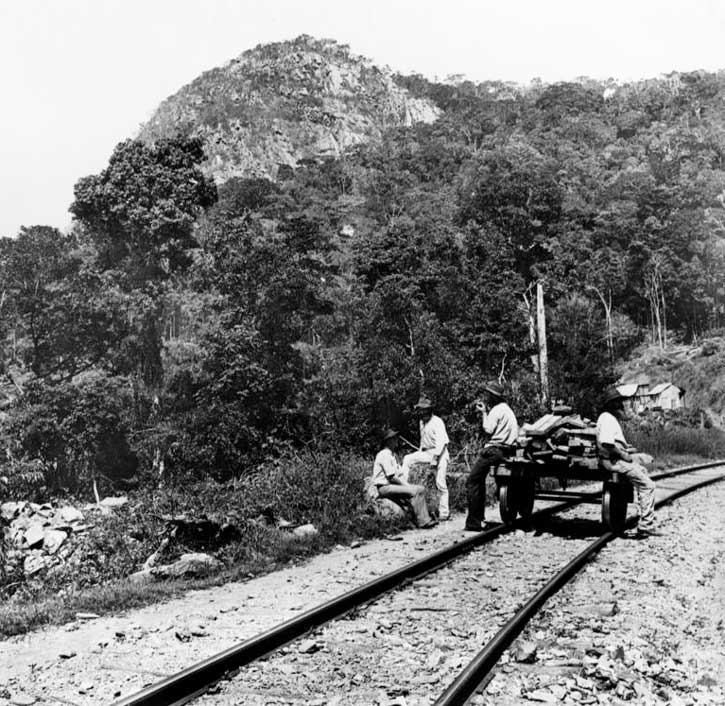
Cape Tribulation. Photo © Pierre-jean Durieu/123rf.
The nearby forests and mountains had been inhabited by Aboriginal tribes for tens of thousands of years when Cook sailed up the coast near Cairns in June 1770.The first European visitor known to have laid eyes on this stunning landscape was Captain James Cook. The nearby forests and mountains had been inhabited by Aboriginal tribes for tens of thousands of years when Cook sailed up the coast near Cairns in June 1770. His journey was a treacherous one, navigating unknown waters, especially the reefs in the region, but he managed to nevertheless name numerous landmarks, such as the Trinity Inlet, now the starting point of most ferries taking visitors on cruises around the Great Barrier Reef, and also Cape Tribulation and Weary Bay, the names being somewhat of a historic reminder of how he and his crew felt when sailing along these shores.No further Europeans visited the region again until gold was discovered at the Palmer River, east of Cooktown, some 260 kilometers north of Cairns, in 1872. Gold called thousands of prospectors to the region in the coming years.

Cairns and the Northern Reef
Trinity Inlet became known for its excellent natural harbor when George Dalrymple explored the coastline in around 1873. But Cairns was not officially established until October 1876, when settlers arrived on board the SS Porpoise. Cairns was originally known as Thornton, after the collector of customs in Brisbane, William Thornton; and then Dickson, after the colonial treasurer at the time. The town was eventually named Cairns after the first governor of Queensland, Sir William Wellington Cairns.
Mostly swamp and wetlands, Trinity Inlet and its surrounding countryside were flat land that was loved by birds but pretty much inaccessible and too unstable for humans.Settling the region was not easy. Mostly swamp and wetlands, Trinity Inlet and its surrounding countryside were flat land that was loved by birds but pretty much inaccessible and too unstable for humans. Yet the early settlers were a determined lot, and in October 1876, the Esplanade, or the Troughton Esplanade as it was originally known, was the first surveyed street in young Cairns. Permanent buildings were slow to be erected, with most settlers living in tents, while building priority was given to wharves and storage sheds. The outlook was bleak—the growing city competed with richer Port Douglas, established in 1877, and was going broke. By early 1882, Cairns was in the depth of a depression, with only 90 people on the official electoral roll. Light at the end of the tunnel came from the building of the railway line that was to connect the interior Atherton Tablelands through the rainforest and mountain range with Cairns. It was an unbelievable feat of engineering that can still be appreciated today with a trip on the Kuranda Scenic Railway, which follows exactly the historic tracks.
Workers building the Cairns Railway in 1891. Photo in the public domain courtesy of the State Library of Queensland.
With the revenue from the railways also came the onset of agricultural wealth from the fruit- and dairy-farming tablelands and the sugarcane industry. Cairns prospered and continued to grow. By the early 1900s, the tent city had developed into a town of 11,000 people.
Progress continued steadily, and in World War II the Cairns region played a big part supplying the Allied Forces. After the war, the tourism industry started taking off, but it was not until 1968 that the first passenger jet service started up between Brisbane and Cairns, allowing easier access to the wonders of this previously very secluded region. Currently more than 79 percent of land in Cairns and the Great Barrier Reef is protected, including areas in the Daintree and Cape Tribulation rainforests of the north, the tropical Atherton Tablelands to the west, and Mission Beach to the south.
Excerpted from the First Edition of Moon Sydney & the Great Barrier Reef.